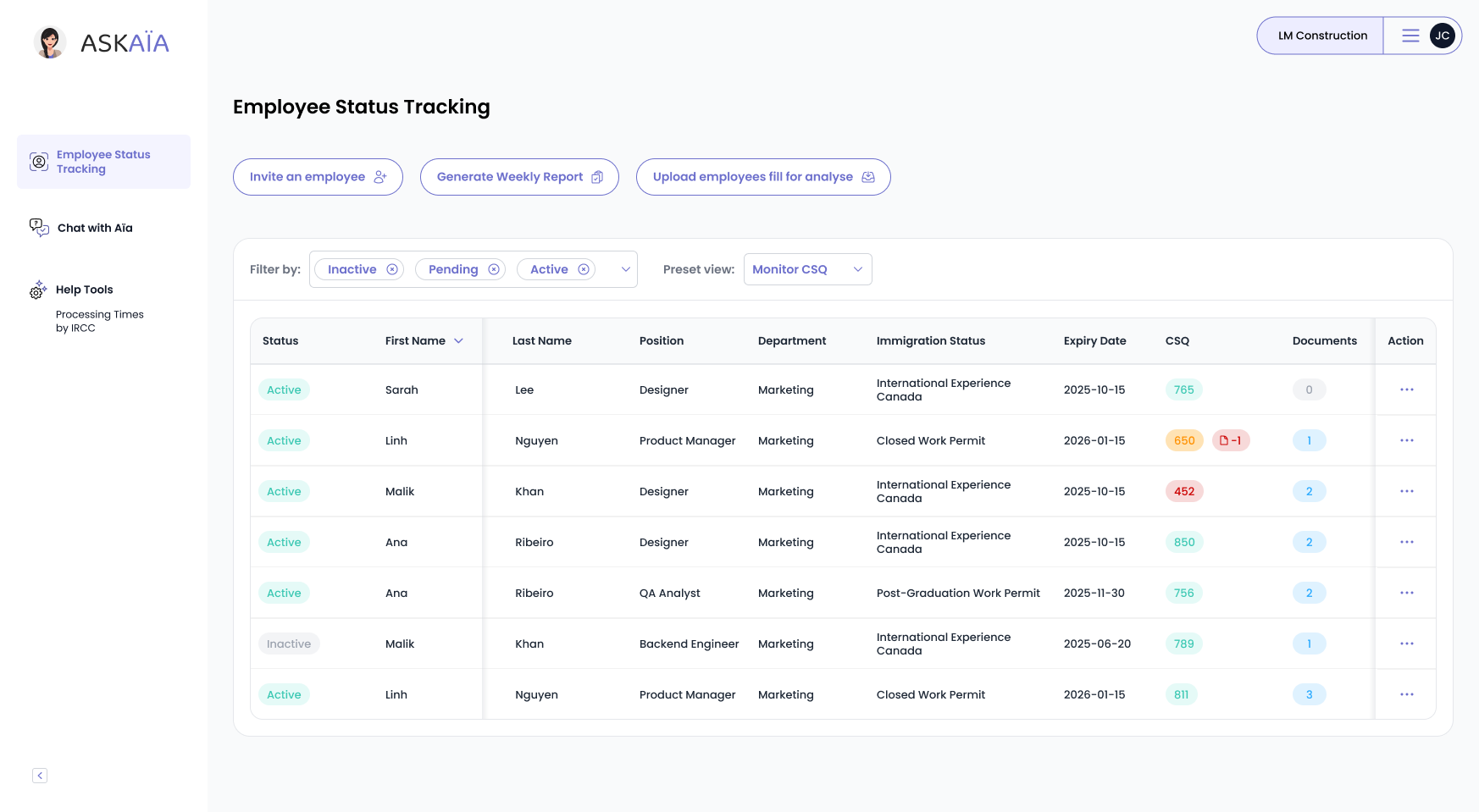New Express Entry Stream for Teachers Launches in Canada

Canada just invited 1,000 educators—and it’s only the beginning. On May 1, 2025, IRCC launched its first category-based draw for education professionals. Teachers, early-childhood educators, and aides are now part of a priority group. If your profile isn’t updated yet, you could miss your chance.In this article, you’ll learn what’s changing in Express Entry, who qualifies under the new Education category, and what steps you can take today to stay eligible and boost your chances.
What’s New in Express Entry 2025
Canada has officially added Education to its Express Entry categories
In February 2025, IRCC announced a major update to its immigration system: a sixth category focused on education-related occupations. This is part of Canada’s ongoing strategy to target skilled workers who match urgent labour shortages.
The first Education-specific draw came earlier than expected
On May 1, 2025, IRCC held Draw #344 and invited 1,000 education professionals with a Comprehensive Ranking System (CRS) cut-off of 479. Many expected the first draw in June, so this move signals urgency, and a fast timeline for future invitations.
What does this mean for Express Entry applicants?
Express Entry no longer relies only on your CRS score. If you work in a targeted field like education, STEM, healthcare, trades, agri-food—or now, Education, you may be selected even if your score is below the usual all-program threshold. But to qualify, your Express Entry profile must already show the right work experience and credentials.
This new category is here to stay for 2025
IRCC will continue running category-based draws monthly. In some cases, these will replace or reduce general draws. So if you’re a teacher, ECE, or classroom aide with Canadian experience, this could be your best shot at permanent residence in Canada this year.
Who Qualifies Under the Education Category
Not all teachers are automatically eligible
To qualify for an Education draw, you need recent work experience in one of five specific occupations. These are defined by Canada’s National Occupation Classification (NOC) system—and each comes with its own skill level and job requirements.
Here’s the full list of eligible occupations:
| NOC | Job Title | TEER |
| 41220 | Secondary school teachers | TEER 1 |
| 41221 | Elementary and kindergarten teachers | TEER 1 |
| 42202 | Early childhood educators and assistants | TEER 2 |
| 42203 | Instructors for persons with disabilities | TEER 2 |
| 43100 | Teacher assistants | TEER 2 |
Minimum requirement: 6 months of recent experience
To qualify, you must have at least six months of continuous, full-time experience in one of these jobs—or the part-time equivalent (e.g., 780 hours), within the last 3 years. The experience must be:
- Paid (unpaid internships or volunteering don’t count)
- Verifiable (you’ll need proof like a letter of employment)
- In one NOC (experience across multiple education jobs doesn't count unless six months are in the same NOC)
Canadian experience is a major advantage
If you’ve worked in education in Canada—even part-time while studying—this can help you qualify faster. It also makes you eligible for the Canadian Experience Class (CEC), another pathway under Express Entry.
You may need a teaching license or certification
Jobs like elementary and secondary teachers are regulated. In most provinces, you’ll need to be certified by a local authority, such as:
- Ontario College of Teachers
- British Columbia Teacher Regulation Branch
- Nova Scotia Office of Teacher Certification
While certification isn’t always mandatory for immigration purposes, it strengthens your profile and may be required to actually work in Canada.
Tip: If you’re not certified yet, start now, it can take several months.
3 Steps to Boost Your Eligibility Now
1. Make sure your ECA is still valid
If your highest degree is from outside Canada, you need a valid Educational Credential Assessment (ECA). IRCC only accepts ECAs issued within the past five years. If yours is older, request a new one and update your Express Entry profile with the new reference number.
2. Add all Canadian work and education experience
Even part-time work after graduation can boost your CRS score and help you qualify for both the Canadian Experience Class and the Education category. Make sure your profile includes:
- Any post-grad jobs, including assistant or substitute roles
- Co-op placements (if they were paid and verifiable)
- Study programs completed in Canada
Tip: Use official job titles that match the NOC code—for example, “Early Childhood Educator (NOC 42202)” instead of just “Daycare Staff.”
3. Set up alerts to track CRS cut-offs
The CRS score can shift fast. In the first Education draw, the cut-off was 479—but it may drop in future rounds. Tools like Aïa’s CRS calculator or IRCC’s online tracker let you monitor changes and react quickly.
Here’s what to do:
- Recalculate your CRS when you update language test results
- Add job offers or certifications as soon as you get them
- Subscribe to alerts so you’re ready when the next draw happens
Provincial Pathways to Consider
Canada’s provinces are also recruiting educators—but the rules vary
While the new Education category in Express Entry is managed by IRCC at the federal level, many provinces have already been targeting teachers, early childhood educators, and classroom assistants through their Provincial Nominee Programs (PNPs).
Understanding both systems can help you find multiple paths to permanent residency and increase your chances of being selected.
Ontario Immigrant Nominee Program (OINP)
Ontario is actively inviting Early Childhood Educators (NOC 42202) through the Employer Job Offer: In-Demand Skills stream and the International Student stream. This province has seen a high demand for licensed child care workers and has aligned its program with federal immigration priorities.
Why it matters: You don’t need a job offer for all OINP streams. If you studied in Ontario or gained experience as an ECE, you may be eligible. Having an Express Entry profile is optional for some streams, but it can speed up the PR process if you’re nominated.
Example: In March 2025, Ontario held a targeted draw inviting ECEs with Canadian work experience and an active profile in the Employer Job Offer stream.
British Columbia Provincial Nominee Program (BC PNP)
BC made major changes in 2025, reducing the number of PNP draws, but Early Childhood Educators remain a provincial priority. Despite a moratorium on many occupations, ECEs may still receive invitations through special rounds, especially if they work in licensed child care centres.
To qualify, you typically need:
- A valid ECE certificate from BC
- A job offer from a licensed employer in the province
- An active profile in the Skills Immigration Registration System (SIRS)
Tip: BC’s points system rewards candidates with Canadian education and regional employment—especially outside Metro Vancouver.
Nova Scotia Nominee Program (NSNP)
Nova Scotia uses the Labour Market Priorities stream, which pulls candidates directly from the Express Entry pool when labour shortages arise. In the past, the province has issued invitations to:
- Teachers (NOC 41220, 41221)
- Early childhood educators (NOC 42202)
- French-speaking education workers
There’s no separate application, you wait to be selected if your Express Entry profile matches the criteria. You must also have proof of recent work experience and often letters of reference.
Other Provinces
Alberta Advantage Immigration Program (AAIP): Alberta sometimes targets educators when local school boards declare a hiring need. Being employed in the province increases your chances under the Alberta Express Entry stream.
Manitoba Provincial Nominee Program (MPNP): Manitoba supports education workers under the Skilled Worker in Manitoba stream, especially if they’ve studied or worked in the province.
Saskatchewan: Through the SINP Occupations In-Demand list, Saskatchewan may also include education-related roles during updates.
Special Case: Quebec
Quebec does not use the Express Entry system. If you’re a teacher or ECE in Quebec, you’ll need to go through the Arrima portal or the Programme de l’expérience québécoise (PEQ). Requirements differ, especially around French proficiency and local certifications.
Bottom line: If you’re working, or planning to work, in education in Canada, explore both federal and provincial options. A nomination from a province adds 600 CRS points to your Express Entry profile, almost guaranteeing an invitation to apply for permanent residency.
What to Expect from Future Education Draws
Canada is shifting to targeted immigration and educators are in focus
In 2025, IRCC has paused all-program draws, focusing instead on category-based selections like education, healthcare, and French-language proficiency. This strategic shift aims to address specific labor shortages and streamline the immigration process for in-demand professions.
Expect more Education draws throughout the year
The inaugural Education draw on May 1, 2025, invited 1,000 candidates with a minimum CRS score of 479. Given the ongoing demand for educators, IRCC is likely to continue issuing invitations in this category, potentially on a monthly basis.
CRS cut-offs may fluctuate
While the first Education draw had a cut-off of 479, future scores could vary based on the number of eligible candidates and Canada's evolving labor market needs. Staying informed about CRS trends and maintaining a competitive profile is crucial.
Key factors influencing your chances:
- Canadian experience: Having recent, paid work experience in Canada, especially in the education sector, can significantly boost your CRS score and eligibility.
- Language proficiency: High scores in English or French language tests can enhance your profile. Consider retaking tests if your current scores are nearing expiration or could be improved.
- Educational credentials: Ensure your Educational Credential Assessment (ECA) is up-to-date, as IRCC only accepts ECAs issued within the past five years.
Stay proactive and informed
Regularly monitor IRCC announcements and CRS score trends. Utilize tools like Aïa’s CRS calculator to assess your profile and receive alerts about upcoming draws. Being prepared and responsive to changes can make the difference in securing an Invitation to Apply.
Act Now to Qualify for Canada’s Express Entry Education Draws
The launch of Canada’s Education category is a major shift in how permanent residency is granted. If you’re an educator or early childhood professional, this could be your best shot in 2025. But you need to act now.
Update your Express Entry profile with valid credentials, Canadian experience, and language test results. Check if your job title matches one of the five eligible NOC codes. And stay ready—draws can happen with little notice.
AskAïa offers a free Express Entry assessment to help you check your CRS score, confirm if you qualify for the new Education category, and track draw results in real time. Whether you're starting from scratch or updating your profile, Aïa gives you a clear plan—fast, simple, and free.

Let’s get your demo started
Book a demo
You May Also Like
These Related Stories

Unlock Permanent Residence: Use French to Boost Immigration
Canada is opening doors for French-speaking immigrants in Quebec and across the country. Mastery of the French language is becoming a powerful tool fo …

Canada Express Entry 2025: Opportunities for Immigrants & Construction
Canada unveiled on February 27, 2025, a major shift in its Express Entry immigration program, introducing new category-based draws. These changes prio …
.jpg?width=1200&height=1000&name=do-you-really-need-an-lmia-employer-options-for-hiring-foreign-talent-%20(1).jpg)
LMIA 101: What Canada Expects Before You Hire a Foreign Worker
If your Canadian company is hiring foreign workers, you may need a Labour Market Impact Assessment (LMIA). But do you know when, and why? For HR teams …